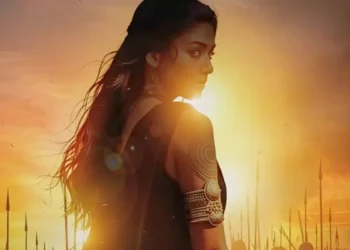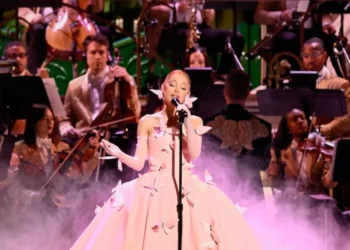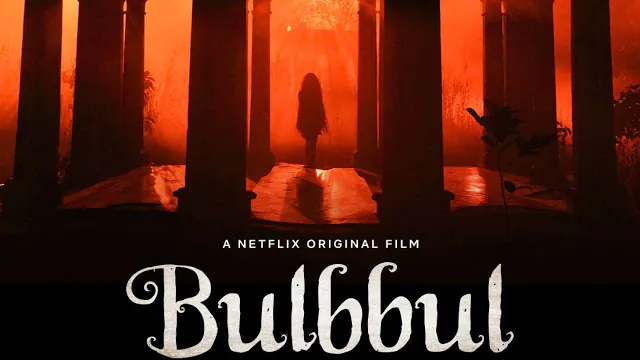Directed by Shazia Iqbal, Dhadak 2 is a reinterpretation of the celebrated Tamil film Pariyerum Perumal (2018). The narrative follows Nilesh (Siddhant Chaturvedi) and Vidhi (Triptii Dimri), two individuals from opposing castes who fall in love. However, their caste differences soon emerge as a significant barrier, jeopardizing not only their relationship but also their safety and lives.
Story
Nilesh, an optimistic yet cautious law student, gains admission to the esteemed National Law College in the city thanks to his impressive grades and caste certificate. Coming from a marginalized and oppressed lower caste background, he understands that education is the key to improving his life and that of his community. In class, he encounters the lively and spirited Vidhi, whose upbringing starkly contrasts his own. Raised in a Brahmin family of lawyers, Vidhi and her sister were brought up in a joint family by their father. While the family is progressive enough to permit their daughters to study law and consume non-vegetarian food, they still adhere to conservative values when it comes to finding spouses, insisting on potential grooms from the same caste. Naturally, the budding relationship between Vidhi and Nilesh incenses her family, particularly Ronnie, Vidhi’s cousin and fellow law student.
Meanwhile, a seemingly ordinary man is on a killing spree, targeting young lovers daring to form relationships outside their castes. This man, claiming to be a social worker, harbors deep-seated hatred for the oppressed lower caste and casually commits murders, disguising them as accidents or suicides.
Though Nilesh is conscious of the risks posed by their respective backgrounds, Vidhi remains carefree and determined to be with him. He initially hesitates, but she is unwavering in her pursuit, with her family emerging as the principal threat to their love story.
Performances
Vipin Sharma delivers a touching performance as Nilesh’s father, a cross-dressing dancer who, in a moving scene, encourages his son to stand firm in his convictions. Zakir Hussain also makes an impression as the college principal, a man of lower caste himself, striving for equity within a biased system. Saurabh Sachdeva is particularly menacing as a self-righteous hitman, hired by the powerful to carry out their nefarious tasks, adding a sinister element to the plot.
However, the film truly shines through its leads. Siddhant Chaturvedi and Triptii Dimri exhibit genuine chemistry, with their connection feeling authentic and raw. Vidhi’s gradual awakening to the social realities of caste and her eventual determination are powerfully depicted, particularly her final, haunting scream that resonates long after the credits have rolled. Dimri successfully embodies the feminist dimension of the narrative, illustrating how the fight against patriarchy parallels the battle against caste discrimination.
Siddhant Chaturvedi, despite hailing from an upper caste, convincingly portrays his character’s rage, sorrow, and resilience. His ability to make the pains and struggles feel genuine showcases his talent. His transformation from a vulnerable student grappling with personal issues to a tenacious fighter is gradual, believable, and deeply moving.
Saad Bilgrami impresses as the antagonistic cousin Ronnie, representing the upper-class privilege and revealing its darker aspects.
Behind the scenes
Shazia Iqbal’s direction is both unyielding and precise. She expertly balances youthful romance with impactful social commentary, ensuring that neither aspect overshadows the other. Her mastery over emotionally charged scenes is commendable; she avoids diluting the caste critique with excessive melodrama. Instead, the film presents small, poignant moments—disapproving glances, segregated spaces, and the silence of educators—that feel distinctly familiar.
The cinematography captures the duality of the story’s world, switching seamlessly between the warmth of sunlit college halls and the gloom of dimly lit interrogation rooms. The production design remains grounded in realism, enhancing the believability of each scene.
While Dhadak 2 can feel somewhat stretched at times and adheres to a conventional storytelling framework, it does manage to stand out in certain ways. Some scenes lingered longer than necessary to provoke emotional responses, which could have been trimmed without losing impact.
The film’s soundtrack warrants special mention. The track “Duniya Alag” transcends mere romantic balladry, serving as a socio-political anthem that highlights the division between two Indias informed by class and caste. Other songs like “Preet Re” and “Bas Ek Dhadak” resonate more deeply when viewed in the context of the film’s story. Overall, the music score leaves a lasting imprint long after the movie concludes.
Final Verdict
Dhadak 2 often leaves you feeling numb, uncomfortable, and provokes deep reflection, which is a positive aspect of the film. Just like sexism, casteism is deeply embedded in our society. It is so pervasive that we tend to overlook it, almost accepting it as the norm. Caste discrimination can be seen in the most subtle ways—in choices of food, clothing, and in the treatment of our domestic helpers. Despite considering ourselves liberal and non-conformist, we all inadvertently participate in this flawed system. The film prompts a wake-up call, urging you to acknowledge your role in perpetuating these issues.
Released alongside the romantic film Saiyaara, which currently dominates the box office, Dhadak 2 presents a stark contrast. While one narrative focuses on love and sacrifice, this film centers on resistance against systemic injustice and the struggle for one’s rights. The love story in Dhadak 2 serves as a catalyst, empowering Neelesh and Vidhi to confront and challenge what they perceive as wrong.
Dhadak 2 is a thought-provoking and intense film that powerfully critiques the modern Indian society, which often perceives caste discrimination as a ‘rural’ issue, dismissing its existence in urban settings. The country still has much progress to make toward treating all individuals with equality. The film’s climax evokes a mix of emotions—fury rather than sadness—leaving a significant impact.
This film is bold and important, warranting attention, conversation, and lasting remembrance. Dhadak 2 is a powerful combination of romance and social realism, leaving a lasting impression once the credits have finished. It is a must-watch for those who believe that cinema can be both enjoyable and transformative.























